#carbonate sedimentation
Explore tagged Tumblr posts
Text
50 Million Years of Climate Change with Christina!
Have you ever thought about how dinosaurs lived on a warm, swampy Earth and how we live on one that’s cold enough to keep pretty much the entirety of Greenland and Antarctica buried under kilometers-thick sheets of solid ice and wondered, hmm, how did we get from there to here? The short answer is that it took 50 million years of declining atmospheric carbon dioxide concentrations and dropping temperatures, not to mention building an ice sheet or two. For the longer story of the last 50 million years of climate change, including some of the reasons why, catch this episode of our podcast with Dr De La Rocha! You’ll hear about plate tectonics and continental drift, silicate weathering, carbonate sedimentation, and the spectacular effects the growth of Earth’s ice sheets have had on Earth’s climate. There are also lessons here for where anthropogenic global warming is going and whether or not its effects have permanently disrupted the climate system. Fun fact: the total amount of climate change between 50 million years ago and now dwarfs what we’re driving by burning fossil fuels, and yet, what we’re doing is more terrifying, in that it’s unfolding millions of times faster.
Bonus content: If you want to see sketches and plots of the data discussed in this episode, you can do so here!
!!Nerd alert!!
If you're interested in the primary scientific literature on the subject, these four papers are a great place to start.
Dutkiewicz et al (2019) Sequestration and subduction of deep-sea carbonate in the global ocean since the Early Cretaceous. Geology 47:91-94.
Müller et al (2022) Evolution of Earth’s plate tectonic conveyor belt. Nature 605:629–639.
Rae et al (2021) Atmospheric CO2 over the last 66 million years from marine archives. Annual Review of Earth and Planetary Sciences 49:609-641.
Westerfeld et al (2020) An astronomically dated record of Earth’s climate and its predictability over the last 66 million years. Science 369: 1383–1387.
Connect with Christina at her blog, on Twitter, and on Mastodon
Support the show on Patreon or make a one-time donation via PayPal.
#climate change#solarpunk presents podcast#ice sheets#climate#plate tectonics#continental drift#silicate weathering#carbonate sedimentation#anthropogenic global warming#global warming#climate system#science
10 notes
·
View notes
Text
An international team of researchers examined the environmental DNA of mammoth remains and more than 1,500 arctic plants to conclude that a wetter climate quickly changed the landscape from tundra grassland steppe to forested wetlands that could not support many of these big grazing animals, driving mammoths to extinction as recently as 3,900 years ago.
Sedimentary deposits are complex. Materials of different ages are routinely buried together. Scientists cannot carbon date DNA.
A unique challenge for environmental DNA (eDNA)-based palaeoecological reconstructions and extinction estimates is that organisms can contribute DNA to sediments long after their death. Recently, Wang et al.1 discovered mammoth eDNA in sediments that are between approximately 4.6 and 7 thousand years (kyr) younger than the most recent mammoth fossils in North America and Eurasia, which they interpreted as mammoths surviving on both continents into the Middle Holocene epoch. Here we present an alternative explanation for these offsets: the slow decomposition of mammoth tissues on cold Arctic landscapes is responsible for the release of DNA into sediments for thousands of years after mammoths went extinct
#paleontology#mammoth#dna#sediment layer#paleolithic#ice age#megafauna#extinct animals#carbon dating
4 notes
·
View notes
Text
Figure 13.6 summarizes major components of the environmental cycle for calcium.

"Environmental Chemistry: A Global Perspective", 4e - Gary W. VanLoon & Stephen J. Duffy
#book quotes#environmental chemistry#nonfiction#textbook#summary#calcium#atmosphere#lithosphere#hydrosphere#precipitation#biosphere#plants#uptake#decomposition#salt spray#sea salt#salt water#sea water#fresh water#soil#coal#combustion#leaching#sedimentation#calcium carbonate#dolomite#feldspar
1 note
·
View note
Text

Discover the best alkaline water purifier in Hyderabad with Sharks Innovation. Improve your health with our innovative filtration technology, which provides clean, alkaline water for your home or business. Shop for the top alkaline water purifier services.
#alkaline copper water purifier Hyderabad#alkaline water purifier dealers in Hyderabad#alkaline uv water purifiers Hyderabad#RO UV alkaline copper water purifier Hyderabad#Carbon sediment RO alkaline water purifier Hyderabad#alkaline water filters in Hyderabad#Ro water purifiers in Hyderabad#alkaline Ozoniser water purifier Hyderabad#alkaline ozone water purifier Hyderabad#Antioxidant alkaline water purifier Hyderabad#Water Ionizer in Hyderabad.
0 notes
Text
"One of the least respected but most important ecosystems on Earth are seagrass meadows, and a pioneering robotic solution is helping marine scientists restore these underwater gardens.
The ReefGen Grasshopper can plant dozens of seagrass seeds per minute. Not only is this faster than a human diver, but much safer as well.
It works by injecting a tiny slurry of sediment wrapped around the seagrass seed into the seafloor. After covering a growing plot of four seeds, the robot ‘hops’ about 30 centimeters away and starts again.
Despite covering a minuscule portion of the seafloor, seagrass meadows are estimated to hold 35-times more carbon than terrestrial forests—amounting to around 18% of the total carbon stock of the world’s oceans.
ReefGen’s founder Tom Chi dreamed up the idea after watching the degradation of coral reefs on his home island in Hawaii. The first iteration of the robot set coral ‘plugs’ onto existing reefs to help regrow them, but the technology was prohibitively expensive for wide-scale use.
Now however, broader selections of off-the-shelf parts have driven down the costs of manufacturing and maintaining underwater robots, according to Chris Oakes, CEO of ReefGen.
“Manual planting works, but robots are really good when things are dull, dirty, dangerous, or distant—the four Ds,” Oakes told CNN, adding that at the moment, Grasshopper is piloted with a controller by a human on the surface.
“Right now, we’re focused on the planting, the biology, and the mechanical aspects, once we’re confident that that’s all designed the right way, we will overlay more semi-autonomous features like navigation, so you don’t actually have to pilot it,” he said.
ReefGen has been able to not only expand into restoration of seagrass meadows, but also see its robots used in oceans around the world. This July, Grasshopper planted 25,000 seeds in Wales. In October, ReefGen teamed up with the University of North Carolina (UNC) Institute of Marine Sciences to test various seed replanting methods out on the state’s declining seagrass meadows.
Oakes says that as cool and “flashy” as a robotic solution might seem, the most important factor in its success will be the long-term monitoring of the fields it’s replanting. Are they growing to maturity, are the seedlings dying off before then, will they live long enough to seed and germinate fields of their own, how do fields it plants compare to fields planted by hand??"
-via Good News Network, December 24, 2024
#marine biology#ecology#seagrass#seagrass meadows#ocean#hawaii#wales#north carolina#united states#uk#north america#europe#robots#environment#climate action#good news#hope
2K notes
·
View notes
Text
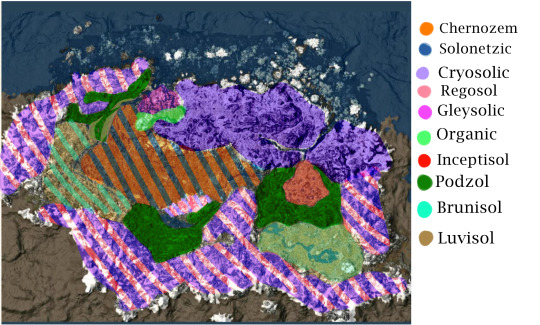
Long awaited, here is the soil map of Skyrim using the Canadian System of Soil classification. Brief description of my conclusions under the cut:
Chernozem: Whiterun Hold is likely home to the majority of Skyrim’s Chernozems. The majority of biological carbon sequestering in grassland environments are below ground, within the root systems. Organic material- humus, builds up, causing the upper layers of the soil to take on a dark colour. Additionally, Solonetzic soils could be present, peppered throughout the hold if the parent material to the soil is salty enough.
Cryosols are formed in Skyrim’s far North and high alpine regions. The mean annual soil temperature being 0 degrees C, with permafrost conditions. Freeze-thaw cycles lead to permafrost at the soils surface, but also cryoturbation: soil movement arising from frost action.
Additionally in mountainous regions, you would find Regosols. Soils which develop on unstable landforms and have had little time to develop, such as mountain slopes, or river floodplains.
Gleysols occur across the landscape of Skyrim, but primarily in Hjaalmarch. Gleysols are commonly found in depressions or low-lying areas where water saturates the soil continuously, leading to a molted characteristic to the soil.
Organic soils would primarily be found in the water saturated soils of Hjaalmarch. These are wetland soils found in forested areas and are commonly known as peat, muck, bogs or fens.
Borrowing from the USDA soil taxonomy, Inceptisols are light colored soils with moderate alteration, occurring under cool and cold climates. These soils would be found in the Eastmarch caldera.
Luvisols are associated with forested landscapes overlying loamy glacial till, or on clayey lacustrine deposits. Lake Honrich dominates a large portion of the Rift, according to UESP, seemingly draining from the lake. I believe this to be the site of a melted glacier, the lake being meltwater. Clay sediments are associated with lakes because of their deposition, coarser sediments bordering the lake near the shore, and finer particles at the deepest reaches. Additionally, at the end of the Karth river, where sandy deposits would be deposited at Solitude, before the stream looses power further down the river, leaving only clay to be deposited.
Podzols are associated with igneous parent materials, coniferous vegetation and high acidity. Primarily they are found in Falkreath Hold and Southern Eastmarch.
Brunisols are an intermediate stage between Regosols (undeveloped soils), and Podzol or Luvisols. I believe with the unstable, mountainous landscape of the Reach, soils would remain still rather undeveloped. Brunisols would also be interspersed among the Luvisols.
3K notes
·
View notes
Text
Dandelion News - September 8-14
Like these weekly compilations? Tip me at $kaybarr1735 or check out my new(ly repurposed) Patreon!
1. Pair of rare Amur tiger cubs debuting at Minnesota Zoo are raising hopes for the endangered species

“[The Minnesota Zoo’s] Amur tigers have produced 57 cubs, [… 21 of which] have gone on to produce litters of their own, amounting to another 86 cubs. […] “They’re showing a lot of resiliency, which is something that we work hard for in human care. We want these animals to have a lot of confidence and be able to adapt to new environments just as they’re doing today.””
2. Powered by renewable energy, microbes turn CO₂ into protein and vitamins
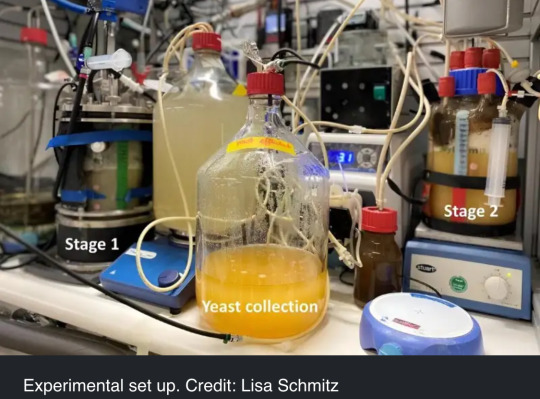
“The team designed a two-stage bioreactor system that produces yeast rich in protein and vitamin B9. [… The protein] levels in their yeast exceed those of beef, pork, fish, and lentils. […] Running on clean energy and CO2, the system reduces carbon emissions in food production. It uncouples land use from farming, freeing up space for conservation[… and] will help farmers concentrate on producing vegetables and crops sustainably.”
3. JCPenney Launches Apparel Collection Aimed At Wheelchair Users

“A major department store is rolling out a new line of clothing specifically tailored to meet the needs of women who use wheelchairs featuring options for both everyday wear and special occasions. [… The clothing have] modifications like zippers located for easy access, pocket positioning and extended back rises optimized for the seated position and shorter sleeves to limit interference with wheels.”
4. Snails bred in Edinburgh Zoo sent to re-populate species in French Polynesia
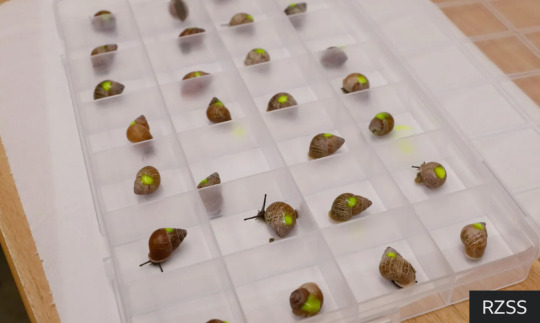
“Thousands of rare partula snails bred at Edinburgh Zoo are to be released in French Polynesia to restore the wild population of the species.The last surviving few of the species were rescued in the early 1990s[….] 15 species and sub-species [are being bred in zoos for repopulation], the majority of which are classed as extinct in the wild.”
5. [NH Joins 19 Other States] to Provide Essential Behavioral Health Services Through Mobile Crisis Intervention Teams
“[CMS] approved New Hampshire’s Medicaid State Plan Amendment for community-based mobile crisis intervention teams to provide services for people experiencing a mental health or substance use disorder crisis. […] The multidisciplinary team provides screening and assessment; stabilization and de-escalation; and coordination with and referrals to health, social, and other services, as needed.”
6. Recovery plan for Missouri population of eastern hellbender
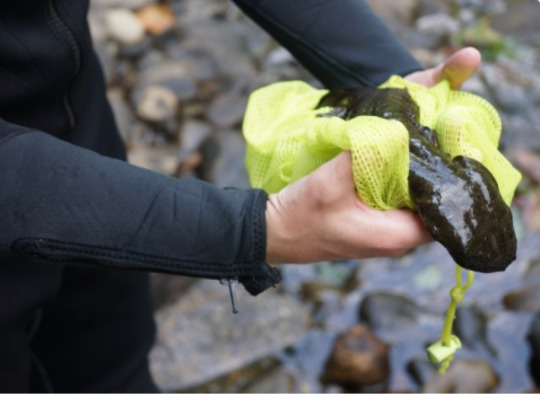
“It is expected that recovery efforts for the Missouri DPS of the eastern hellbender will reduce sedimentation and improve water quality in the aforementioned watersheds, which will also improve drinking water, as well as benefit multiple federally listed mussels, sport fish and other aquatic species.”
7. How $7.3B will help rural co-ops build clean power—and close coal plants

“[The funds are] serving about 5 million households across 23 states [… to] build wind and solar power, which is now cheaper than coal-fired power across most of the country. […] Some of it will be used to pay down the cost of closing coal plants[….] federal funding could help co-ops secure enough wind, solar, and battery resources to retire their entire coal capacity by 2032, cutting carbon emissions by 80 to 90 percent and reducing wholesale electricity costs by 10 to 20 percent[….]”
8. Native-led suicide prevention program focuses on building community strengths

“[Indigenous researchers have] designed programs that aim to build up a community’s endemic strengths, rather than solely treating the risks facing individuals within that community. By providing support and resources that enable access to Alaska Native cultural activities, they hope to strengthen social bonds that build resilience. […] “In a Yup’ik worldview, suicide is not a mental health disorder, and it’s not an individual affliction, it’s a disruption of the collective.””
9. Another rare Javan rhino calf spotted at Indonesia park

“A new Javan rhino calf has been spotted in an Indonesian national park, the facility's head said Friday, further boosting hopes for one of the world's most endangered mammals after two other […] calves were spotted earlier this year at the park, which is the only habitat left for the critically endangered animal.”
10. Transparent solar cells can directly supply energy from glass surfaces

“[Researchers have] unveiled a method of supplying energy directly from glass of buildings, cars, and mobile devices through transparent solar cells. […] It has also succeeded in charging a smartphone using natural sunlight. It also proved the possibility that a screen of a small mobile device can be used as an energy source.”
September 1-7 news here | (all credit for images and written material can be found at the source linked; I don’t claim credit for anything but curating.)
#hopepunk#good news#nature#tiger#endangered species#sustainability#animals#nutrition#jc penney#wheelchair user#adaptive clothing#fashion#snail#edinburgh#scotland#french polynesia#mental health#new hampshire news#missouri#hellbenders#salamander#wind energy#solar power#clean energy#native#community#rhino#technology#baby animals#solar panels
504 notes
·
View notes
Text
Humans are often inclined to build seawalls to protect coastal communities from encroaching oceans, but those require constant, expensive maintenance. And in fact, the way we’re changing land, rivers, and climate—and even the seawalls themselves—are undermining natural protections, such as tidal marshes, barrier islands, coral reefs, seagrass beds, dunes, gravel beaches, and kelp and mangrove forests. If left intact, these natural communities can slow fresh and tidal water, acting as a buffer, providing flexible and resilient protection for human communities. They provide multiple co-benefits, and even have the ability to sustain themselves. With these abilities, they can reduce by half the number of lives and properties at risk from storm surges and sea-level rise, according to a study in Nature Climate Change. Unlike seawalls, tidal marshes have a superpower against sea-level rise. It’s not just that they are a buffer between the water and human infrastructure, sapping energy from storm surges and blocking the highest tides. Marshes can actually grow vertically, keeping pace with sea-level rise by trapping sediment in their vegetation, which decomposes and then regrows. To perform this trick, they need three ingredients: sediment, space, and time.
[...]
Broadly speaking, human development has erased many of water’s slow phases—floodplains, meadows, forests, and wetlands, such as tidal marshes. For example, humans have eradicated 87 percent of the world’s wetlands. What water wants, say the detectives, is a return of these slow phases, an approach I think of as the “Slow Water Movement.” Slow water approaches are unique to each place, work with local systems, are distributed rather than centralized, are socially just, and empower and engage the local community. They also provide multiple benefits beyond buffering us from flood and drought, including carbon storage and homes for threatened plants and animals.
29 November 2022
221 notes
·
View notes
Text
Meet the unsung climate heroes in the deep sea: Acorn worms
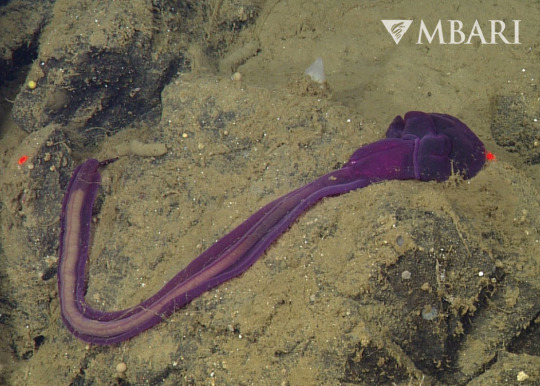
Twisting and turning atop the muddy ooze, the acorn worm (class Enteropneusta) is an unassuming worm-like animal that has a surprising connection to Earth’s climate.
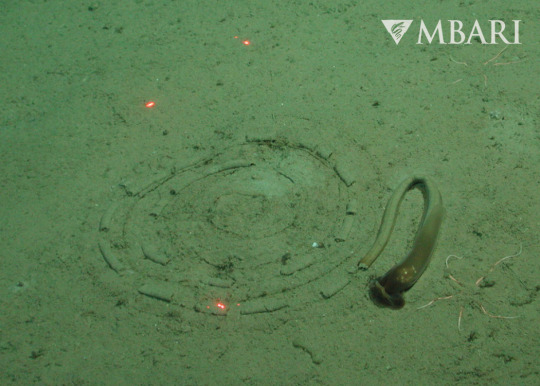
Named for their acorn-shaped front end, enteropneusts are actually more closely related to humans than to worms.
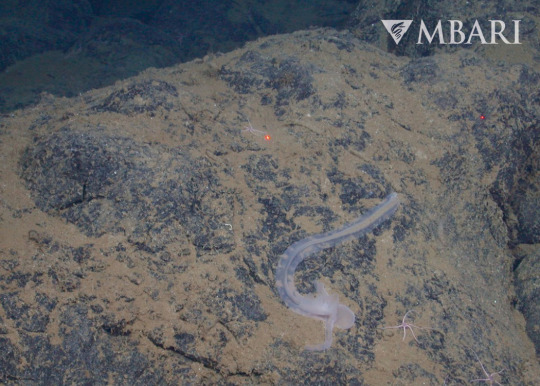
They have a rudimentary nerve cord that is similar to ours, and they breathe oxygen using structures similar to a fish's gills.
youtube
Acorn worms are connected to us through the carbon cycle. They play a significant role in the redistribution of sediment and nutrients in deep-sea communities. As they do their part to help regulate climate, we can do our part by drastically reducing our carbon dioxide emissions. The ocean is a powerful ally that has buffered us from the impacts of climate change—now it is our turn to act on climate change to safeguard the future of the ocean and its inhabitants.
977 notes
·
View notes
Text
There's a guy who really, really loves Pepsi. He's been drinking it since he was a kid and it's his favorite drink of all time, he can't get enough of it. So, when a lady comes up to him and offers him a glass of Pepsi, he's ecstatic. "Yes, please!" he says, and takes the glass and drinks it down. The Pepsi is warm and kind of flat, but that's okay. It's still Pepsi and he still loves Pepsi. So when the lady offers him another glass, he takes it and drinks it down. This one is also warm, and much more flat, but that's okay. It's still Pepsi, and he still loves Pepsi. So when the lady offers him another glass, he takes it and drinks it down. This time, it's very warm and very flat. But, it's still Pepsi. And he still loves Pepsi. So, when the lady offers him another glass, he takes it, and drinks it down.
Now, by this point, the man who loves Pepsi is starting to forget what fresh Pepsi tastes like. It's been forever since he had it, and while he has a lot of old pictures of Pepsi and of him drinking Pepsi, that crisp, fresh taste is just out of reach in his memories. So, when the lady offers him another glass, he takes it, drinks it down, and starts to wonder if maybe this is as good as Pepsi will ever be again. If so, he's disappointed, but he still loves Pepsi. So he keeps taking the glasses, and he keeps drinking them down.
Then, one day, the woman hands him a glass that he drinks. The moment the Pepsi touches his tongue, he gags. This isn't just warm and flat. This is disgusting. It's old and sour and thick and filled with sediment and it tastes like it's been baking in the sun for six weeks. The woman who handed him the glass insists it's Pepsi. The man who loves Pepsi disagrees. Pepsi used to be fresh and crisp and its distinct taste filled his mouth with joy. It was cold and refreshing and always made him happy. This...stuff he just drank is not in any way the Pepsi he loves. "Not so," says the woman. "It has all the same ingredients. The same sugars. The same recipe. It even comes from the same can with that famous Pepsi logo. Sure, those ingredients were mixed a little differently. Some of the proportions were changed. Certain ingredients were prioritized over others. And the can was opened weeks ago and left outside in the sun a bit, but everything you love about Pepsi is still there. You're just too caught up in your idea of what Pepsi is to see it."
But the Pepsi fan will not be swayed. This is not Pepsi. This is some terrible bastardization of what Pepsi used to be. What it always should be. The crisp taste and the cool refreshing carbonation is essential, and he no longer wants to drink this desecration of the thing he loved.
"But this is the thing you love," the woman insists. "All the same ingredients. All the same packaging. If you don't love it now, then you never truly loved it at all."
Now the Pepsi fan is angry. How dare this woman tell him he never loved Pepsi. He's always loved Pepsi! And right as he's about to tell the woman exactly where to shove her fake, cheap, imitation slop, out from her pocket she pulls a brand new, unopened can of Pepsi. Our Pepsi fan stops and stares at the familiar blue can. This is the Pepsi he remembered. The woman places it in the fridge. It's even going to be cold! The Pepsi fan asks if he can have a glass of that Pepsi.
"Soon," the woman says.
The Pepsi fan is thrilled. Soon. Soon, he will once again have his Pepsi. The Pepsi he remembers. The Pepsi he's loved his whole life.
With a smile on his face and a spring in his step, he goes into the next room to wait until he can once again enjoy his Pepsi. The moment he leaves, the woman takes the can out of the fridge, opens it, and leaves it outside in the sun.
The man, blissfully unaware, eagerly begins to anticipate his next glass. He goes online and tells all the Pepsi naysayers that finally they're going to get back the Pepsi they all love.
And that's Disney Star Wars in a nutshell.
235 notes
·
View notes
Text
youtube
S2.8 is now on YouTube!
Have you ever thought about how dinosaurs lived on a warm, swampy Earth and how we live on one that’s cold enough to keep pretty much the entirety of Greenland and Antarctica buried under kilometers-thick sheets of solid ice and wondered, hmm, how did we get from there to here? The short answer is that it took 50 million years of declining atmospheric carbon dioxide concentrations and dropping temperatures, not to mention building an ice sheet or two.
For the longer story of the last 50 million years of climate change, including some of the reasons why, catch this episode of our podcast with Dr De La Rocha! You’ll hear about plate tectonics and continental drift, silicate weathering, carbonate sedimentation, and the spectacular effects the growth of Earth’s ice sheets have had on Earth’s climate. There are also lessons here for where anthropogenic global warming is going and whether or not its effects have permanently disrupted the climate system. Fun fact: the total amount of climate change between 50 million years ago and now dwarfs what we’re driving by burning fossil fuels, and yet, what we’re doing is more terrifying, in that it’s unfolding millions of times faster.
Bonus content: If you want to see sketches and plots of the data discussed in this episode, you can do so at our website here!!
Nerd alert!! If you're interested in the primary scientific literature on the subject, these four papers are a great place to start:
Dutkiewicz et al (2019) Sequestration and subduction of deep-sea carbonate in the global ocean since the Early Cretaceous. Geology 47:91-94.
Müller et al (2022) Evolution of Earth’s plate tectonic conveyor belt. Nature 605:629–639.
Rae et al (2021) Atmospheric CO2 over the last 66 million years from marine archives. Annual Review of Earth and Planetary Sciences 49:609-641.
Westerfeld et al (2020) An astronomically dated record of Earth’s climate and its predictability over the last 66 million years. Science 369: 1383–1387.
#carbonate sedimentation#silicate weathering#solarpunk#solarpunk podcast#Solarpunk Presents Podcast#Dr Christina De La Rocha#plate tectonics#deep time#climactic system#climate change over millions of years#biogeochemical cycles#biogeochemistry#geological analysis of climate change#carbon dating#global warming#earth sciences#history of climate change#archaeology of climate change#continental drift#what was the climate like for the dinosaurs#youtube#Youtube
8 notes
·
View notes
Text
Round 2 - Arthropoda - Copepoda
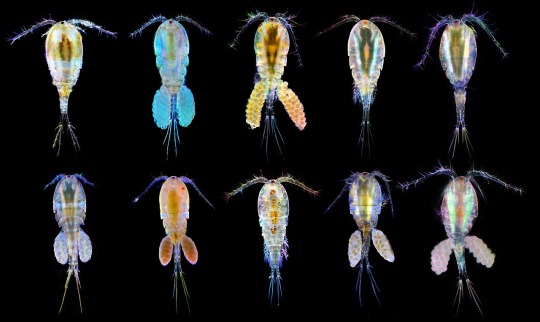
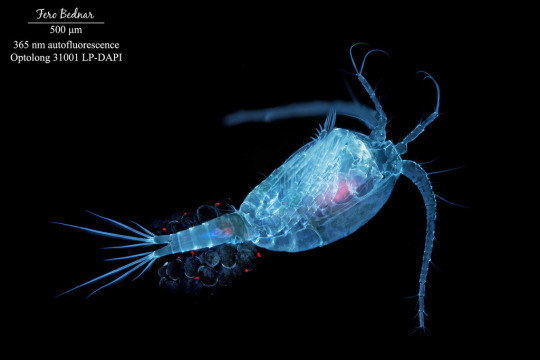
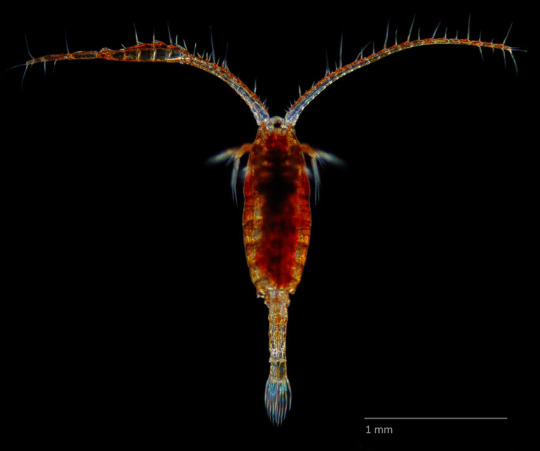
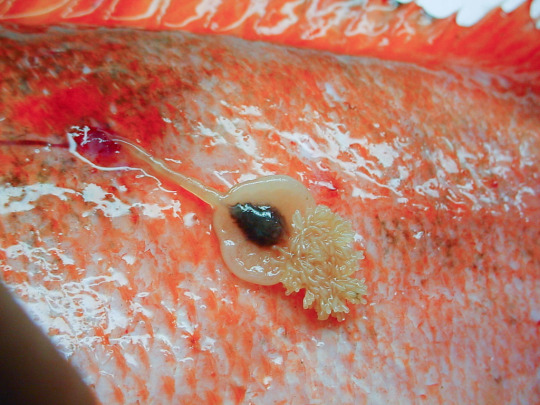
(Sources - 1, 2, 3, 4)
Copepoda is a class of small crustaceans found in nearly every freshwater and saltwater biome, including the arctic. Some are planktonic, some live in sediment (benthic), some live underground in sinkholes or caves, some are parasitic, and some even live in wet terrestrial places such as bogs and the water-filled cups of bromeliads. They are small, usually 1 to 2 mm long, with a teardrop-shaped body and two pairs of antennae. Some polar copepods can reach up to 1 cm long. Most copepods have a single compound eye, usually bright red and in the centre of their transparent head. Subterranean species may be eyeless, and a couple genera have two eyes. Free-living copepods have a head fused with the first one or two thoracic segments, with the remainder of the thorax being comprised of three to five limbed segments. The first pair of appendages are maxillipeds, limbs used for feeding. The second pair beat like oars, aiding in swimming. They have a narrow abdomen with five leg-less segments, with tail-like rami at the tip. Meanwhile, the anatomy of parasitic copepods are so widely diverse that I simply do not have space to talk about it here. Copepods have incredibly fast reflexes, due to well-developed myelin sheaths, allowing them to escape predators at high speeds, often porpoising out of the water. Like ostracods, many species also use bioluminescence as a defense mechanism, using it to distract predators (see gif below).
When they are ready to mate, some copepod females leave a trail of pheromones for males to follow. When mating, the male will grip the female with his antennae and produce an adhesive spermatophore, then transfer it to the female’s genital opening. After fertilization, the eggs will sometimes be laid directly into the water column, or, in some species, the female will carry them in a sac until they hatch. In some pond-dwelling species, the eggs can remain dormant in the case of the pond drying up, waiting to hatch until more favorable conditions are present. The larvae hatch with a head and a tail but no true thorax or abdomen. In fact, the larvae look so different from their adult forms that many of them were once thought to be different species! They will moult 5-6 times before becoming a copepodid larva which resembles the adult, sans some limbs and segments. After 5 more moults they will reach adulthood.
The oldest known fossils of copepods are from the Late Carboniferous, but due to their small size and fragility, they are rare in the fossil record. However, these fossilized copepods seemed to belong to an extant (still living) family, meaning that copepods may have already reached the forms they are in now by the Carboniferous.
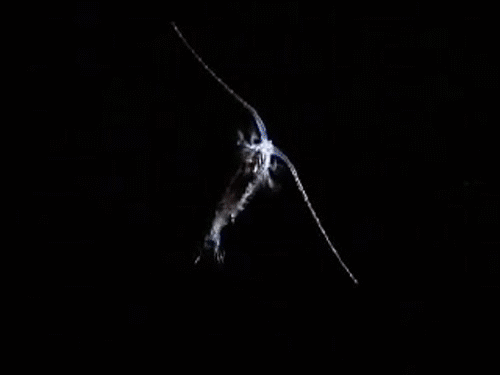
Propaganda under the cut:
Copepods are dominant members of zooplankton and are food for many species of fish. Some scientists say they form the largest animal biomass on earth, matched only by Antarctic Krill.
The surface layers of the ocean are the world’s largest carbon sink, absorbing harmful greenhouse gasses: about 2 billion tons of carbon a year, the equivalent of a third of human carbon emissions. Copepods contribute to a large part of this, feeding near the surface at night, and then carrying these gasses to deeper water with them. Their moulted exoskeletons, feces, and respiration all transfer carbon to the deep sea.
Live copepods are a popular addition to saltwater fish tanks, both as a food source for hard-to-feed fish, and as a clean-up crew.
Copepods are sometimes added to water-storage containers to control mosquitos, as some species will eat mosquito larvae. Copepods have been used successfully in Vietnam to control mosquitoes carrying dengue fever, and trials to employ this method are also underway in Thailand and the southern United States.
Sheldon J. Plankton, of “Spongebob Squarepants” fame, is a copepod!
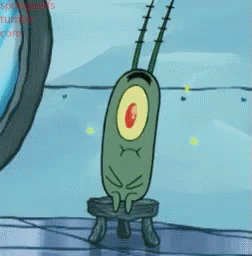
63 notes
·
View notes
Text
This simplified cycle (figure 14.23) does not therefore involve any redox chemistry.

"Chemistry" 2e - Blackman, A., Bottle, S., Schmid, S., Mocerino, M., Wille, U.
#book quotes#chemistry#nonfiction#textbook#carbon#carbon cycle#redox#oxidation#reduction#photosynthesis#respiration#combustion#sediment#seabed#life#coal#oil#carbon dioxide#carbonate
0 notes
Text
A little over a decade ago, a robotic rover on Mars finally uncovered an answer to a pressing question. It's now clear that the red planet does, indeed, have organic material buried in the sediment of its ancient lakebeds. Since then, we've continued to find organic molecules on Mars distributed in a way that suggests carbon chemistry is widespread across our small rusty neighbor. This doesn't mean we've found signs of alien life. Far from it; there are many non-biological processes that can produce organic molecules. But exactly where the material came from has posed a bit of a puzzle.
Continue Reading.
74 notes
·
View notes
Text

Discover the best alkaline water purifier in Hyderabad with Sharks Innovation. Improve your health with our innovative filtration technology, which provides clean, alkaline water for your home or business. Shop for the top alkaline water purifier services.
#Alkaline Water Purifier Hyderabad#Alkaline Water Purifiers & Manufacturer in Hyderabad#alkaline water filters in Hyderabad#alkaline uv water purifiers Hyderabad#alkaline copper water purifier Hyderabad#alkaline water purifier dealers in Hyderabad#RO UV alkaline copper water purifier Hyderabad#Carbon sediment RO alkaline water purifier Hyderabad#Ro water purifiers in Hyderabad#alkaline Ozoniser water purifier Hyderabad#alkaline ozone water purifier Hyderabad#Antioxidant alkaline water purifier Hyderabad#Water Ionizer in Hyderabad.
0 notes
Text
NOW PLAYING ‘I CAN’T STOP THE LONELINESS’ BY NIGHT TEMPO. jade leech
Good old Jaido is being ironic, acting happy on the worst day of his life. Why would an artist create happy music to pair it with such sad lyrics?
tags: unrequited love, angst and tragedy, hurt no comfort, complicated relationship, regrets & sorrows, friendships, bro doomed by the narrative, happy birthday to me fuckers
word count: 2,087

The first dance goes to Floyd, his brother.
This is only natural because, of course, the bride dances with the groom on their wedding day.
At his seat at the family table, Jade rolls a glass of celebratory champagne in his gloved hand. Freshly poured, it still bubbles with some last desperation. Champagne is a sipping wine but – carbonation burns the bridge of his nose with white pain as he gulps it down. Each organ in Jade stirs like kicked sediment, bubbling over.
Floyd’s side of the table is weighed down by their father, mother, himself, and grandmother; yours is weighed down by Grim, who is trying to steal extra food off his father’s plate. The reservation hall is drowned in people though, all coming together to support your unity.
The only one who fails to uphold this support wholeheartedly is one-drink-down-ten-more-to-go Jade Leech, the pillar of brotherhood crumbled and eroded.
It is my own fault. Jade thinks as his mother pours him another drink. All my fault.
You and Floyd dance to ‘Can’t Take My Eyes Off You’. Sung by Frankie Valli, each lyric and note match up with each other perfectly. There is no juxtaposition between melody and meaning. With you cradled in his arms, Floyd looks down, softly mouthing each word to you. By doing so, he expresses that each word is genuine, engraved in his soul.
To Floyd, he truly cannot take his eyes off of you, magnetized in. When there is a break in lyrics, he steals June coded kisses – warm like the beginning of summer. You two nuzzle cheek to cheek, amorous.
As expected, Floyd cannot stay slow-dancing for longer than a minute. Melody starts to change. From sweet, it goes to this jumping excitement as the baritone horn and baritone saxophone intensify. You two start to pull away, independent in your motions.
Besides the tight hold both your right hands have … refusing to let go … tying the knot.
The music goes: can’t take my eyes off of you, bum bum, whump whump, bam-d bam-d, bum bum, whump whump. You shimmy your shoulders back and forth, a smile eclipsing your face. Floyd throws you a wink, hips swaying side to side. Despite the ridiculousness … no, because of your joint ridiculousness, it amplifies that sentiment of nuptial bliss: you two were destined and designed for each other.
Moved by music, you even hop in platform heels. Then, blindsided and unexpecting Jade watches, as the beat reaches its peak. You two shout, both of you jumping, but making certain your eyes connect when you shout the lyrics: “I love you, baby!!” The crowd goes wild with cheers, clapping along to the music.
And if it’s quite alright, I need you baby to warm a lonely night! You and Floyd throw away coordination lessons as the song continues, already the perfect dance partner for each other.
This entire wedding feels like one big, ironic joke being played on him.
Jade looks up from his happy, bubbling champagne when Floyd dips you so low that your spine is parallel and supine to the ground, floating only four inches or so. Both of you laugh louder than the music and cheers. A polite smile is still glued to Jade’s face.
He says words that only the watery ear of his champagne hears, “I should have never introduced them.” Unsaid because he is swallowing his alcohol-scented sorrow: It is all my fault.
The second dance goes to their father.
You seem to remember those coordinated dance lessons afterall. Especially graceful in his father’s imposing arms. Though, you keep your stance far away from his father’s shoes. Trembling at the mere notion of just touching the side of one. Burnished elkan leather that probably costs equivalent to your engagement ring.
Your engagement ring – ah, what a cursed, loathed object it is in Jade's world.
He was there when Floyd bought the ring. Do you know this? Jade thinks you probably do not. The proposal spot was all Floyd’s plan while the engagement ring was Jade’s.
“Get her this one.” Jade had pointed towards an engagement ring with a criss-crossing design on the band and a diamond the size of a dime. “Diamonds are known for their durability.”
Diamonds would be able to sustain through a wild lifetime with Floyd.
Washing dishes and spreading cream cheese on bagels in the blissful morning light, typing on computers and holding a phone up to your ear to talk in the middle of noon, brushing teeth and reaching under the sheets to stroke teasingly at his navel, moving further down and down, in the blanket of night light. Living a domestic life until you were dissolved into seafoam. All the remains of your love. A single diamond ring on a skeleton finger. Resilient.
Even though one should be the main player in their own life, it seems Jade is destined and designed for the background.
When Floyd told Jade where he would propose, it kicked his ribs and stomach harder than any alcohol could. ‘I’m already down, why push me further’ is what Jade’s half-a-second wrinkling expression spoke. With the news broken, Jade smiled with hidden rage, “I’m sure she will love that.”
The place Floyd proposed? It was the place Jade introduced you to his twin.
Isn’t it ironic? Jade knew you first but he will never know you the best. You will reveal your pink love and black secrets to Floyd yet never Jade. Jade: your first friend in Twisted Wonderland, now your brother-in-law.
The third dance goes to their mother.
You are truly more beautiful than any diamond. You are something that gleams brighter than all the jewelry on the ocean floor or in sunken shipwrecks. When Jade and Floyd were little, they used to steal stuff from each other all the time. Noses would be broken because hey, that shell you found is prettier than mine! It only makes sense that they would find themselves attracted once again to the same, shining allurement.
They learned to share as all children do. They broke off pieces of a sturgeon’s scales together and shared that. The diamond that is you though? Jade means a lot to you, he knows it; he knows it does not go beyond friendship.
When you are dancing with his mother, you shine. Laughter pianos out of your mouth in a genuinely happy melody. Unlike him, you do not have to force this mirth. Acrylic nails grab your wrist and twirl you so fast you could puke. Giggles are a kinder substitute. Despite your early anxiety, all is alright now.
Jade reflects upon that. The only moment you were frowning at that wedding.
He was speaking to Trey Clover when you appeared out of nowhere, platforms clicking. The visage of you stole his breath away; then, you stole him away from his conversation with Clover, apologizing. Jade let himself be dragged by your firm hand. As the tendrils of your hair and wedding veil bounced with your pace, Jade watched the dorsal side of his diamond gleam and raced down to a secluded hallway.
You turn on Jade, blindly bright. Sevens, you look gorgeous. Even with that frown on your face – how can he help, he wants to soothe it away immediately – you are a sight he will never tire off.
“Am I doing the right thing?”
For a second, Jade’s world stops.
He thinks for a second, perhaps he could be the main character. For second, the diamond on your ring finger is not so loathsome to him. Instead of it representing infinity, it turns finite. It is a piece of jewelry you can take off. It takes only a second before you speak again:
“I mean, Floyd has been so great through all this. Super understanding, super wonderful. I mean he’s put up with all my little whims. And he was so excited about seeing the dress! I mean, the tradition of not seeing the bride before the ceremony is boring and super outdated –”
Ah, he is back in the secondary character position. You were only talking about the tradition you brought over from your world. It had a little bit of your culture that you wanted to keep with you – not seeing Floyd until you walked down the aisle.
Jade is incredibly stupid to think you were talking about the wedding. You do not seem the type to call off a wedding. He smiles and asks, “That eager?”
“Well, I,” you fluster and look away. ‘No. I’m not, but it was the only thing Floyd and I really fought on. I’m starting to realize that it is a bit silly.”
“Keeping tradition is often how we show love for the generations before us.”
You weigh Jade’s words carefully on the scale of your consciousness. He wonders if he spoke his heart if you would take that into consideration or ignore it. After a pregnant silence, you say, “But I don’t really have a family history anymore.”
Jade blinks, surprised, as you continue, “Today, Floyd is going to become my family. Or, well, I’m going to become part of his. I have nothing of myself to offer in terms of tradition anymore.”
“You will just choose to assimilate to the circumstances?”
“Wouldn’t anyone do so for love?”
Those words fall like an anvil on Jade’s heart. “Yes. I fear they might.”
“Fear is such a drastic word!”
Jade laughs as you say, “Ah but I suppose it is true. I’m actually terrified right now.” Your hands fall down to play with the hem of your gown. You run your thumb over the outfit you will only wear once. Such a monumental, life-changing piece of fabric.
The diamond catches a flicker of light, reflective. Jade asks, “Are you having regrets?” He waits with bated breath.
“About Floyd? No. Never.” Your expression only solidifies the truth of your words.
“Then my advice?” You look on with eager eyes. Jade smiles through the pain. “I say you should keep with the tradition. Weddings are a merge of the very notion. When you become a Leech, you still have your identity to care for.” That is not the real reason though. Because, this. This Jade gets to steal: the first sight of you in your wedding dress.
“Thanks, Jade. You’re the best friend – the best brother that a bride could ask for.”
Hand over his heart, concealing everything, “It is my pleasure.”
The final and fourth dance goes to Jade.
Carried by a crowd that rushes, you two dance a mad dance, hands welded together. In your gown, you move like Jade imagines all those sneaky princesses that defied and tricked the Seven must have – well, six princesses. Like an oscillating dream, you lean back, arms out. Laughing, you swing right back into Jade, chest to chest and arms out to the side instead.
When your hearts connect in the dance, Jade thinks he could be foolish enough to steal a kiss. Just one to be a solution to all his troublesome pining. A shade of Venus pink, shining and alluring him into a dumb mistake.
I had you first but I will not have you last. Or in any ways that matter to your heart.
The song that plays is a melody that demands dancing. It is a force that moves your hips to sway side to side. Puppets you jump around, platforms banging along with the lyrics. And what tragic lyrics they are. The smile on your face would make him think he was listening to a love song.
Fluent in quite a few languages, Jade knows better. Though, Jade is unsure why the song is structured like this. Why would an artist create happy music to pair it with such sad lyrics? It is such a cruel juxtaposition. Jade smiles when you twirl yourself so your dorsal side lies against his front, snug in his arms as he dances with you. Those Venus-hued lips pull up in a diamond grin.
Why would an artist create happy music to pair it with such sad lyrics? There is only one answer. Irony.
Jade laughs and helps you back to your feet when your platforms catch on the bottom of your wedding gown. You thank him so genuinely. Jade never wants this particular melody to end.
Then, it does.
“Can I steal my Shrimpy back,” Floyd jokes, when the song ends. You happily launch yourself into his arms, ready to dance until your feet are sore. Stolen successfully.
89 notes
·
View notes